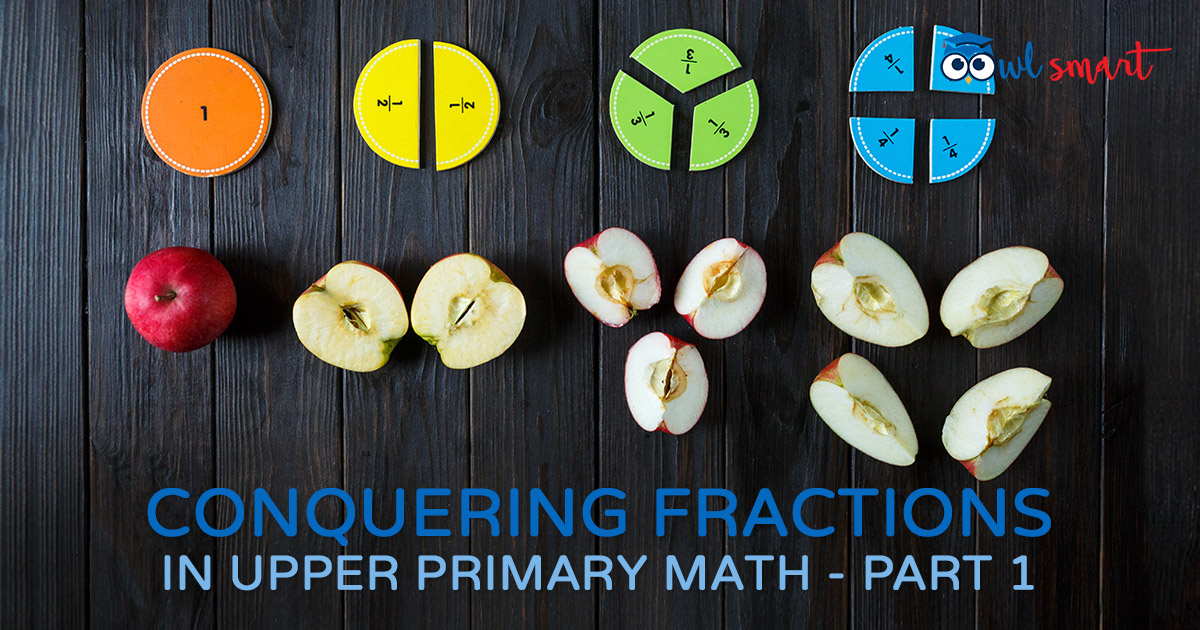
Many students face a lot of difficulties when it comes to learning fractions. This is because they could not visualise the value of a fraction and the basic concepts revolving around it. If the foundation in understanding fractions is not “solid”, it will affect the subsequent learning of other concepts related to fractions.
In this article, I am going to share with you some common difficulties/misconceptions that P5 students frequently face when they learn fractions in the first term of the year.
Compare Questions 1 and 2 below. If you have read carefully, you would have noticed that the only difference between the two questions is the addition of the kg unit in Question 2.
Question 1
A bag of flour weighed 3/4 kg. Jane used 2/5 of it. How much flour was left in the bag?
Question 2
A bag of flour weighed 3/4 kg. Jane used 2/5 kg of it. How much flour was left in the bag?
Despite this only difference, the approach to solve the following two questions will be totally different. Many students are confused about the difference between the concepts involved when they encounter the two similar questions. Let’s analyse the solutions for the two different questions below.
Question 1
A bag of flour weighed 3/4 kg. Jane used 2/5 of it. How much flour was left in the bag?
Solution

Fraction of flour left = 1 - 2/5 = 3/5
Weight of flour left = 3/5 of ¾ kg = 6/20 kg = 3/10 kg
Notes
Jane used 2/5 of it. The word “it” refers to the total weight of the flour which is ¾ kg. Since Jane used 2/5 (or 2 units) of the total amount of flour, she would be left with 3/5 (or 3 units) of the flour.
In the fraction 2/5, the denominator “5” means a total of 5 units represents the total weight of ¾ kg. The numerator “2” means 2 units represents the amount of flour Jane has used. Thus, we can draw the model as shown above.
If your child still has problem understanding this, we can simplify this question by changing the value ¾ kg to a whole number, say 10 kg. Most students would be able to understand this immediately when the value as a fraction is changed to a whole number. See below.
A bag of flour weighed 10 kg. Jane used 2/5 of it. How much flour was left in the bag?

Weight of flour left = 3/5 of 10 kg = 6 kg
Question 2
A bag of flour weighed 3/4 kg. Jane used 2/5 kg of it. How much flour was left in the bag?
Solution

Weight of flour left = 3/4 kg – 2/5 kg = 7/20 kg
Notes
Note that Jane used 2/5 kg of it. The word “it” refers to the total weight of the flour which is ¾ kg.
2/5 kg is the part while ¾ kg is the whole.
To find the part (left), we just have to subtract the part (used) from the whole (Total weight).
To simplify the problem, we can also simplify this question by changing the value ¾ kg to a whole number, say 10 kg and 2/5 kg to another smaller whole number, say 4 kg. For example,
A bag of flour weighed 10 kg. Jane used 4 kg of it. How much flour was left in the bag?

Weight of flour left = 10 kg – 4 kg = 6 kg
Conclusion
Fractions is an important yet difficult topic that ALL students must learn well. Together with whole numbers, ratio, percentage and decimals, these topics revolve around the concept of part and whole. The strategies learnt in these few topics can be applied across the topics too.
Look out for the next Math article in which I will share with you more commonly misunderstood concepts between ‘Fraction of a total’ and ‘Fraction of a remainder’.
About the Author
Teacher Zen has over a decade of experience in teaching upper primary Math and Science in local schools. He has a post-graduate diploma in education from NIE and has a wealth of experience in marking PSLE Science and Math papers. When not teaching or working on OwlSmart, he enjoys watching soccer and supports Liverpool football team.



